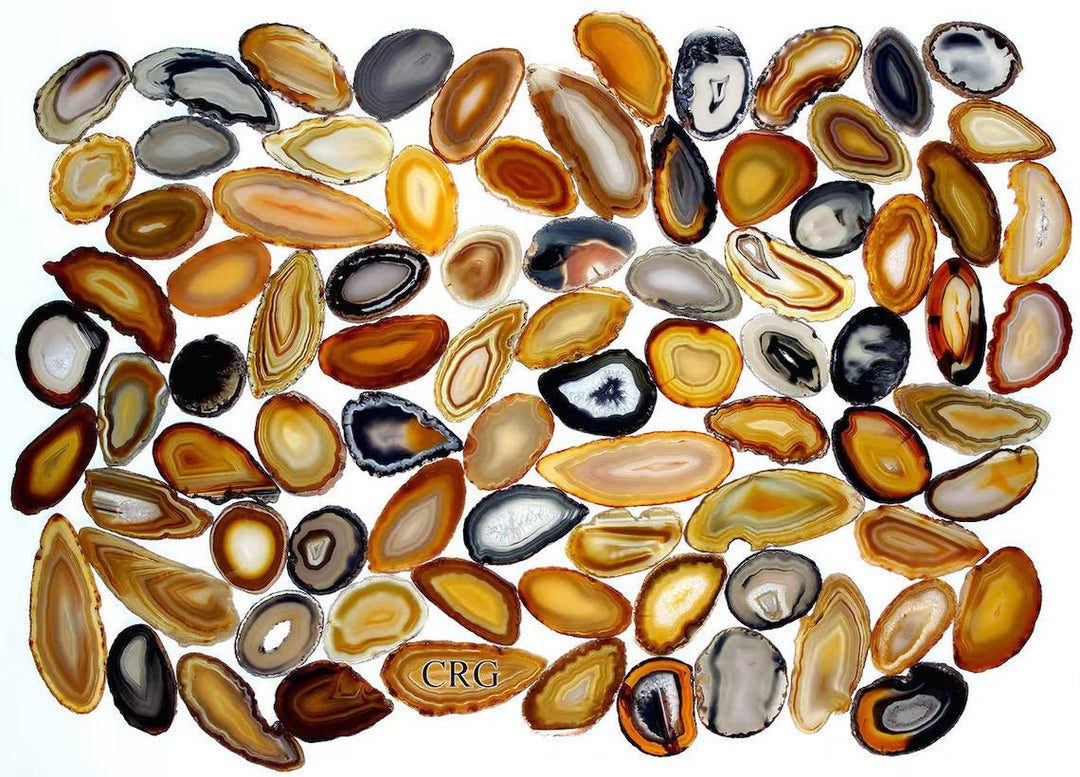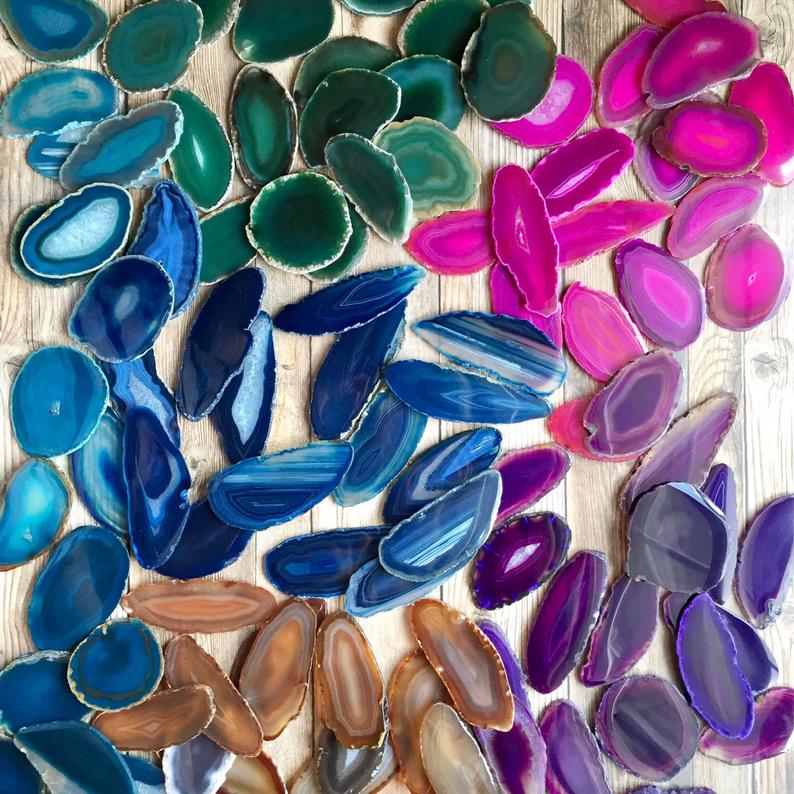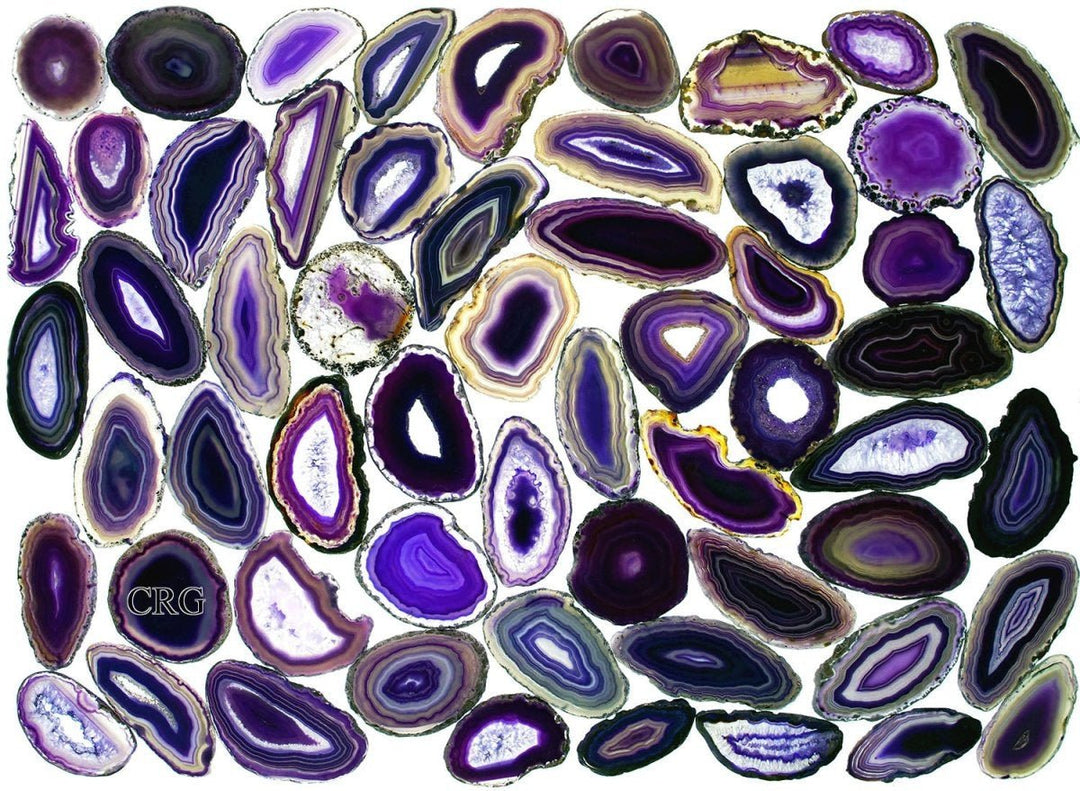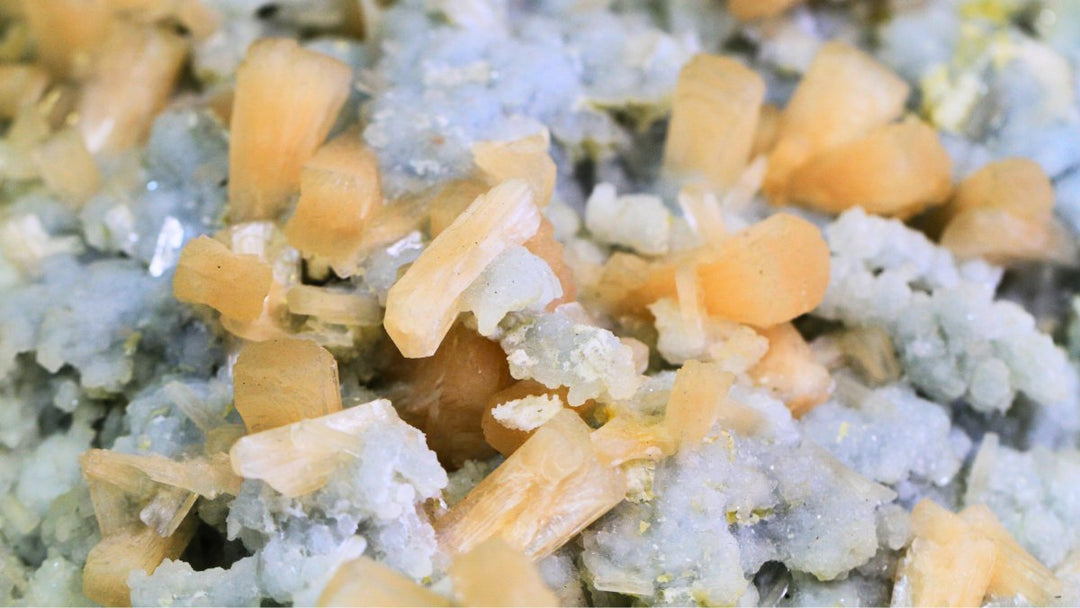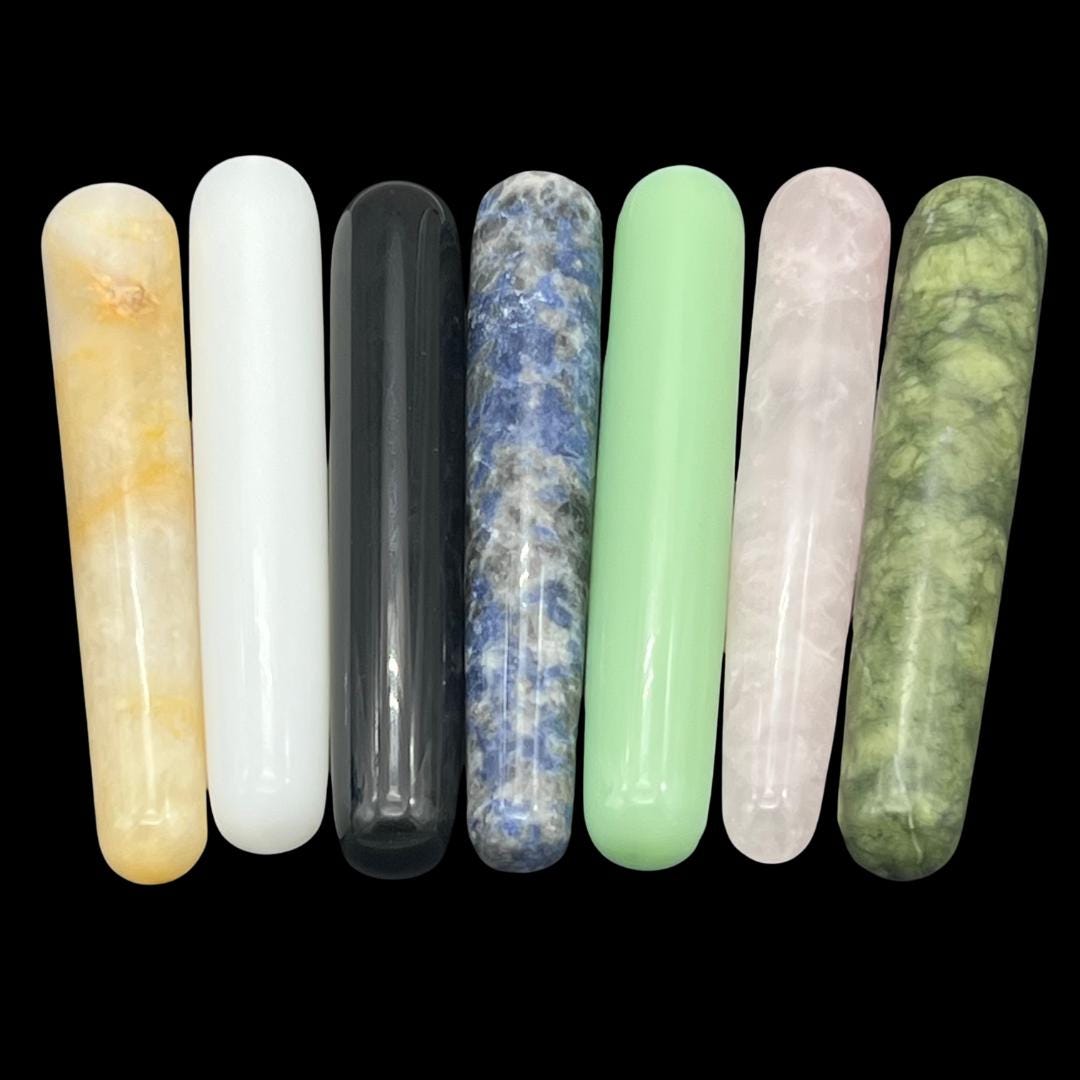We know from personal experience that as our collections grow larger and larger, questions about the care of stones and crystals begin to bubble up in our minds. How should we store them? Which stones are safe to put in water, and how should we clean those that must remain dry? Which stones can withstand sunlight? In this post, we’ll break it down so that everyone feels secure and confident in managing their stunning collections.
Note: none of the lists in this article are exhaustive. If you are wondering about a particular stone and cannot find it here, please don’t hesitate to email us at shop@crystalrivergems.com.

Storing Your Stones and Minerals
Creating the right environment for our collections is a crucial step. It determines how often they need to be cleaned (if at all), whether they will maintain their physical characteristics, and even whether they are safe for us to handle.
The extent of storage care we need to exercise depends on the stones themselves. For instance, polished amethyst carvings require less specific storage specifications than cinnabar specimens. Let's go over proper storage methods for various pieces.
Least extensive storage method:
- Best for polished shapes/carvings like spheres, palm stones, flames, skulls, animal carvings, etc. Also good for anything in the quartz/amethyst family.
- Stones may be stored on most regular surfaces like shelves, mantles, and ledges.
- Some may also be stored outdoors! (Note: make sure your stones are sun-safe before placing them outside or on windowsills. See "Stones in the Sun" section below for details.)
- Curio cabinets are a great option to reduce the necessity of frequent cleaning. They minimize interaction with the overall room's air flow, which means they also minimize dust accumulation.
- Take care that your storage surface is stable and out of the way to prevent damage to the stone or harm to a person or pet.
- Always wash hands after handling crystals and stones. Never ingest or inhale them.

Medium extensive storage method:
- Best for most raw specimens (with the exception of potentially hazardous materials). Research each mineral type to determine whether or not it is potentially hazardous.
- May be stored in sturdy boxes or trays, cabinets made for geological specimens, or organized drawers that slide shut. Keeping specimens organized and apart from each other prevents cross-contamination between different minerals.
- Storage materials should be inert (like stainless steel, wood, or plastic) so that specimens are not exposed to material failure or harmful byproducts.
- Storage containers should seal as well as possible. Not only does this help maintain specimens' physical characteristics; it also helps keep us safe as collectors, so that mineral dust is not getting into the air.
- Label specimens clearly. It's important to know exactly which mineral we are handling!
- Always wash hands after handling raw minerals. Never ingest or inhale them.
Very extensive storage method:
- Best for potentially hazardous minerals like asbestos or cinnabar.
- Should be stored in polyethylene self-sealing bags. Minerals like these should never be left in the open air.
- Label specimens clearly. Again, we need to know precisely which mineral we are dealing with!
- Research your mineral type before acquiring it! Some specimens will require extremely specific storage methods. For instance, cinnabar specimens should be stored in a vapor barrier envelope to mitigate mercury vapor emission.
- Always use a toxic dust respirator, gloves, and safety goggles when handling potentially hazardous minerals. Always wash hands after handling them. Never ingest or inhale them.
Regardless of which storage method you use, be aware of pyrite decay! This is a phenomenon that comes from high humidity (over 60% RH). Pyrite decay occurs when the iron pyrite in some mineral specimens reacts with water and oxygen in the atmosphere to convert to iron sulfate. This reaction will typically cause the specimen to crack into pieces and fall apart. It will also produce a distinct sulfur smell. To prevent pyrite decay, store specimens containing iron pyrite in as dry an environment as possible.
Speaking of wet vs. dry conditions...

Cleaning Stones: Water or No Water?
There are multiple reasons why a collector would wish to clean their stones. One reason is to keep the pieces in good physical condition so that scientific observations about their properties are more accurate. Another reason is to ensure that the stones remain beautiful and eye-catching. Yet another reason is because some people use crystals and stones for spiritual purposes, and they believe cleaning practices help maintain stones' metaphysical effectiveness. Whatever the reason, most crystal enthusiasts at some point become interested in cleaning their stones. Their first question is often this: Can I use water?
As a general rule, only stones with a rating of 6 or above on the Mohs hardness scale should be water cleansed. But a high Mohs rating shouldn’t be the only determining factor for water cleanses, since some harder crystals have other features or inclusions that mean they can’t get wet (such as copper or iron ore).
Here are some stones that are perfectly safe with water:
- Agate
- Obsidian
- Rose Quartz
- Smoky Quartz
- Clear Quartz
- Amethyst
- Jasper
- Aventurine
- Tiger’s Eye
- Citrine
- Carnelian (freshwater only!)
- Opal
Here are some stones that shouldn’t get wet:
- Labradorite
- Fluorite
- Azurite
- Kyanite
- Selenite
- Apatite
- Calcite
- Lepidolite
- Aquamarine
- Hematite
- Kunzite
- Black Tourmaline
- Pyrite
- Moonstone
- Lapis lazuli
- Turquoise
- Amazonite
- Angelite
- Malachite

Here are a few methods for cleaning water-safe stones:
- Use a spray bottle to moisten your stone, then wipe clean with a cloth or paper towel. This method is best if your stone is just a little dusty.
- Run under a tap and scrub with a little dish soap. Regular sponges, dish cloths, and even toothbrushes work well for this method.
- Soak in soapy water for 24 hours, then rinse. Scrub if needed. This method especially helps loosen any caked-on dirt that has accumulated.
- Acetone (found in nail polish remover). This method is best for anything that does not come off with water -- but be careful! It may erode stone treatments, leaving smooth surfaces rough in some cases (especially if you are using 100% acetone).
How should we clean stones that cannot get wet? There are multiple methods to do this safely:
- Soft cloth dusting. Use a soft cloth to dust your stones. This method works best for stones that are smooth and don't have vugs or druze.
- Soft-bristled brush. Use a small soft-bristled brush to dust your stones. This method is good for druzy or vuggy stones. Makeup brushes work especially well!
- Compressed air can. Use a can of compressed air to blow dirt and dust away.
- Dry toothbrush. For a deeper clean, use a dry toothbrush to scrub away grime, then wipe off residue with a cloth.
- Dental pick (use with caution!). This is a good method for removing caked-on chunks of dirt. Be extremely cautious when using this method on soft stones under a 6 on the Mohs hardness scale, or you might scratch your piece.
- Of course, you can also use any of the no-water methods for your water-safe stones!
It's important that we understand which stones can be cleansed with water and which cannot. If you are wondering about the water safety of a stone that isn't listed here, please contact us at shop@crystalrivergems.com!

Stones in the Sun
Why are some people interested in placing their stones in direct sunlight? Just like with water cleansing, there are multiple reasons. Some people wish to showcase their pieces on windowsills. Some people enjoy decorating their yards or gardens with stones. Still others believe in stones' metaphysical properties and use the sun for charging. But no matter the reason you wish to expose your piece to sunlight, it is best to know whether doing so is safe (for you and for the stone!).
First, everyone should be aware never to place a quartz sphere in sunlight, because it will act exactly like a magnifying glass and can start a fire in seconds. Other stones will merely experience a color fade, like amethyst, fluorite, and many more. Some stones will become brittle due to sun exposure, like blue calcite.
Here is a list of stones that are fine in sunlight:
- Rose quartz
- Obsidian
- Carnelian
- Labradorite
- Selenite (for under 4 hours)
- Tiger’s eye
- Amazonite
- Hematite
- Angelite
- Howlite
- Red jasper
- Pyrite
- Lapis Lazuli
- Moss agate
- Black onyx
- Malachite
- Sunstone
- Tourmaline
Here is a list of stones that shouldn’t be exposed to sunlight:
- Clear quartz (danger of fire, will start to crack)
- Amethyst (color will fade)
- Green aventurine (color will fade)
- Smoky quartz (color will change)
- Blue calcite (color will fade, stone will grow brittle)
- Fluorite (color will fade)
- Citrine (color will fade)
- Aquamarine (color will fade)
- Kunzite (color will fade)
- Opal (color will fade)
- Turquoise (color will fade)
- Unakite (color will fade)
We definitely want to make sure we are maximizing our stones' physical potential. Some stones are happy in the sunlight, and some prefer to remain in the shadows. If you are wondering about a stone and it isn't listed here, feel free to email us at shop@crystalrivergems.com!

Whether we have a scientific interest in crystals, sell them, or use them for spirituality or self-care, it's important to keep in mind how to care for the crystals themselves. When properly stored, handled, and cleaned, the loveliness that enraptures us will last for generations and beyond. We should all be mindful and intentional in how we treat our crystals, because when we treat them well, they pay us back in brilliance.




